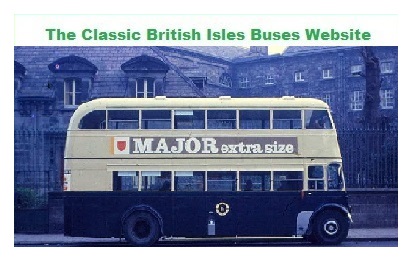

The Classic British Isles Buses Website
Coras Iompair Eireann 1971 to 1981 (by Shane Conway)
Page last updated on 19 August 2024
Email Classic U.K. Buses Classic Irish Buses Classic Manx Buses
| 1945-1950 | 1951-1955 | 1956-1961 | 1962-1966 | 1967-1970 | 1971-1981 | CIE adverts 1957 | Bombardiers (KC, KD, KE, KR and KW) |
The summer of 1971 saw the introduction of the first of a fleet of 213 12 metre long Leyland Leopards, thought to be the first large batch of buses of this length in the British Isles. Indeed the batch included what is probably the first one of all, chassis number 902956 which became fleet number M30. The M class was split neatly into four batches, 30 coaches for express work, 140 dual purpose for stage carriage routes, 23 more express coaches and finally 20 tour vehicles with higher windscreens and no destination equipment. A further planned batch of ten coaches was cancelled before production started. As the 1970s wore on, CIE's relationship with British Leyland became more strained, and in 1975 two M class received DAF engines, followed by two others getting Cummins units in 1976. CIE had been using General Motors powered locomotives since 1961, and impressed by the reliability of these, fitted two Detroit Diesel engines to a third pair of M class buses in 1976 and 1977. The roar of a Detroit powered Leopard had to be heard to be believed, and definitely left the listener in no doubt as to what was under the floor boards In this case the chassis had to be modified to fit the American unit. A re-engining programme commenced in 1978, using DAF and GM products. With repaints, re-engining and various body alterations, it is probably accurate to state that eventually no two M class buses ended up exactly the same. Many of the later Atlanteans also received the DAF unit, a design originally derived from the Leyland O.680 engine. The arrival of these Leopards enabled the withdrawal of the last half cab single deckers and Royal Tigers, although conductors remained in the company's employment afterwards, and occasionally could be found working on single deckers.
Driver only operation, which had been introduced to the single deck fleet some years earlier, was planned for the Atlanteans from 1969, and the body design on these buses was altered to dual door 74 seat layout in line with this. However trade union opposition to the idea delayed the changeover, and it was to be 17 years before a CIE decker would operate without a conductor, and the first Atlanteans so operated were D820 to 823 on Dublin's route 58 (the first route done was the 38 with KD class Bombardiers) in 1986, by which time CIE itself was being prepared for the transfer of its business to three subsidiary companies.
Apart from the company putting its largest vehicles into service in the 1970s, it also introduced its smallest ones too, in the shape of Ford Transit 14 seaters for lightly trafficed school routes. A total of 78 were bought, with 45 of the mark 2 version arriving in the early 1980s. With Ireland joining the E. E. C. (as it then was) Spa Road works was leased to Van Hool McArdle, a new subsidiary of the well known Belgian coach builder. The plans to achieve volume production both for C. I. E. and other operators never came to full fruition, with less than 800 vehicles being produced in the five years of the company's existance, of which more than half (Leyland Atlanteans and Bedford SB5s) were for C. I. E. A number of C. I. E.'s AN68s undertook demonstration trips to Great Britain, and from this a total of 65 double deckers (one Atlantean and 64 Volvo Ailsas) were ordered, all except two of them being for South Yorkshire PTE. A curious twist to the South Yorkshire order to Volvo (and likewise with West Midlands PTE), was the fact they were ordered due to a lack of supply of new Daimler Fleetlines which was then the preferred vehicle for both operators. Most Fleetlines at that point were going to London Transport. However, in 1986, when London Buses required secondhand double deckers, guess what they bought? Yep, ex Yorkshire and Birmingham Volvo Ailsas.... Anyway, the demise of Van Hool McArdle, combined with CIE's worsening relationship with British Leyland, initially meant a reprieve for many of the early 1960s Titans and Leopards, until the next generation of CIE's buses and coaches could be developed and put into production. But that's another story................
The D class allocations shown below are understood to be correct. However it would be appreciated if any errors can be notified and they will be corrected.
1971
1972
1973
1974
1975
1976
1977
1978
1979
Email Classic U.K. Buses Classic Irish Buses Classic Manx Buses